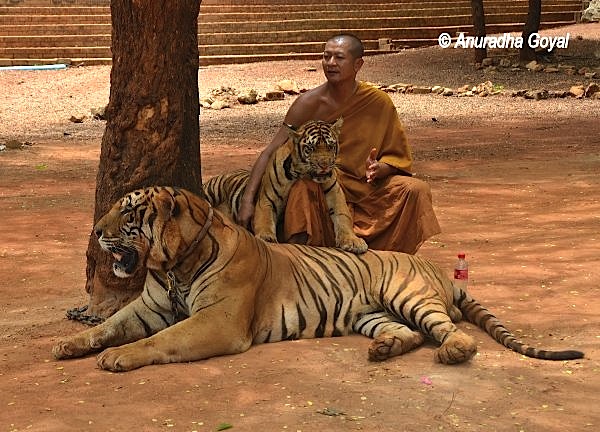
I have never been this up close and personal with tigers, getting within a few centimeters of them. Some of my fellow travelers even patted them and played with them, I did not have the courage, but after a while I was comfortably moving around with many tigers tied to various trees in an open dusty ground. Standing there I realized the difference between reading and hearing about some experiences and actually being a part of them. I was scared and excited at the same time. Some instinct gave me the courage to stand there with ease and click pictures and videos, may be it was the chains around the necks of these big cats or was it the volunteers in shining pink color or the monk who was treating them like children and playing with them. I did go a bit white every time they opened their mouth and showed those long sharp teeth sometimes to yawn and sometimes to make a bit of noise. At the same time, when I saw their movements being restricted by the chains around their neck, it felt sad. I felt an empathy for them with an impulse to open their chains.
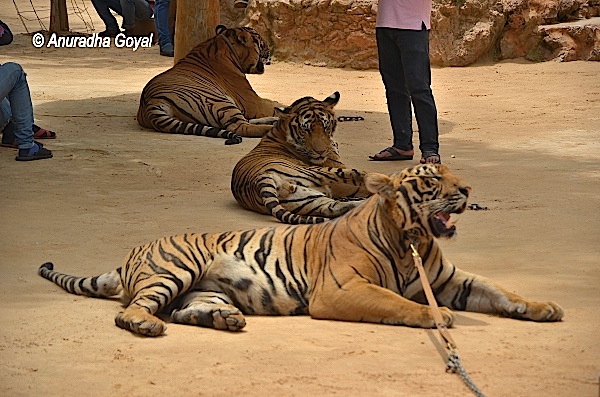
Before entering the temple I has read the details outside the ticket window in Shuddh Hindi that spoke about how the tigers are trained to live with the humans from a very young age and why the allegation of them being drugged is false. I came back and read many views of the earlier travelers and I found most western media being very skeptical about animals being maltreated for the purpose of tourism. However there were undercover reports too that said they found nothing to prove the use of any drugs or any bad treatment of animals. What is my view – well animals looked healthy, though some had bruises and cuts on their skins but that can be because of living in the wild. They were definitely tamed or were they too used to humans and cameras. The show that is put up for almost 2 hours every afternoon is obviously to make money, I am sure tigers are least interested in being patted by the petite humans or having cameras clicking them from all angles. I saw them being fed with spoon and even water being given from old Coca-Cola bottles – as a mighty animals I am sure they would like to go out and hunt but then does it hurt them if their food walks up to their mouth – I don’t think so.
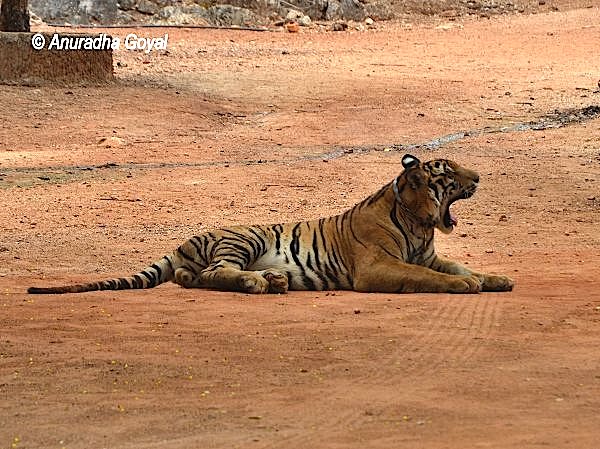
We were told that there are about 140 tigers in this 2-decade-old monastery that is officially called Wat Pha Luang Ta Bua, and the reason the display for visitors happens around lunch time is because this is when tigers are at their laziest best after they have been well fed. Makes sense though they make you sign a declaration that you enter the sanctuary at your own risk and the temple will take no responsibility in case of a mis-happening. If one wants to see them in a more active phase, there are programs where you can see them playing in not so restrictive environment, feed them and make them exercise. Towards the end, you can walk the tigers to their canyon, pat them while walking or hold their tail or leash. I did walk with the tiger but at a safe distance with many people between the tiger and me.
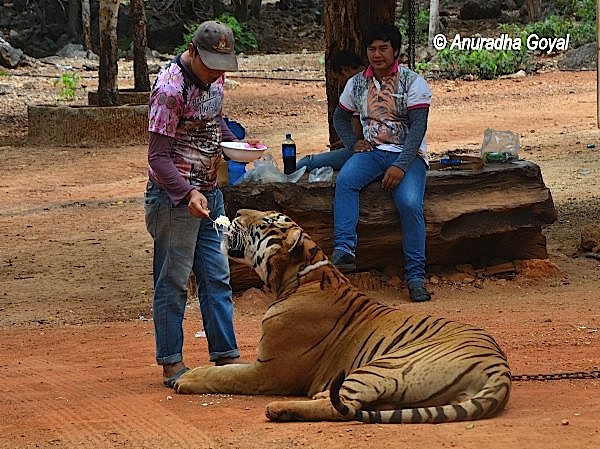
Many international volunteers work at the temple and they actually act as a wall between you and the animals and keep an eagle eye on what you do with the animals. The day we went, there was just one monk and it was all volunteers handling the show.
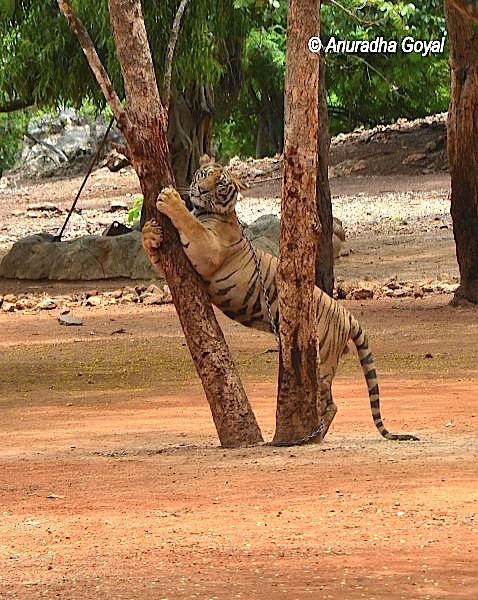
As per the dress code of temple, you are not allowed to wear bright colors as they can excite the animals. Since this is also a monastery, though visitors do not get to see the temple or the living area of monks, women are supposed to wear clothes that cover their shoulders and knees and men are also not allowed in shorts as it is considered disrespectful to the monks. You are also not allowed closer to tigers with any bags on you. Fair enough.
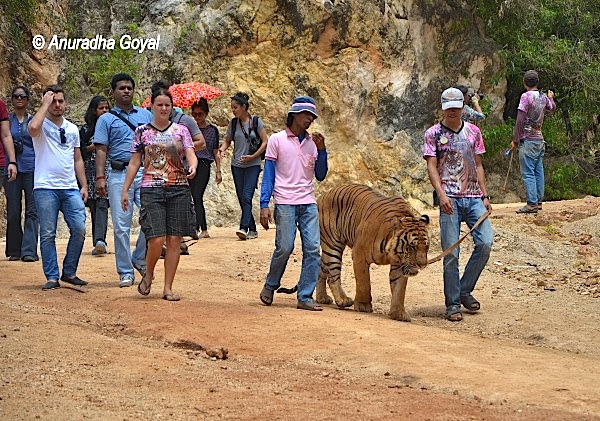
It is an experience to be so close to tigers though the controversies are bound to tear you apart on the ethics of the whole program.






0 comments:
Post a Comment